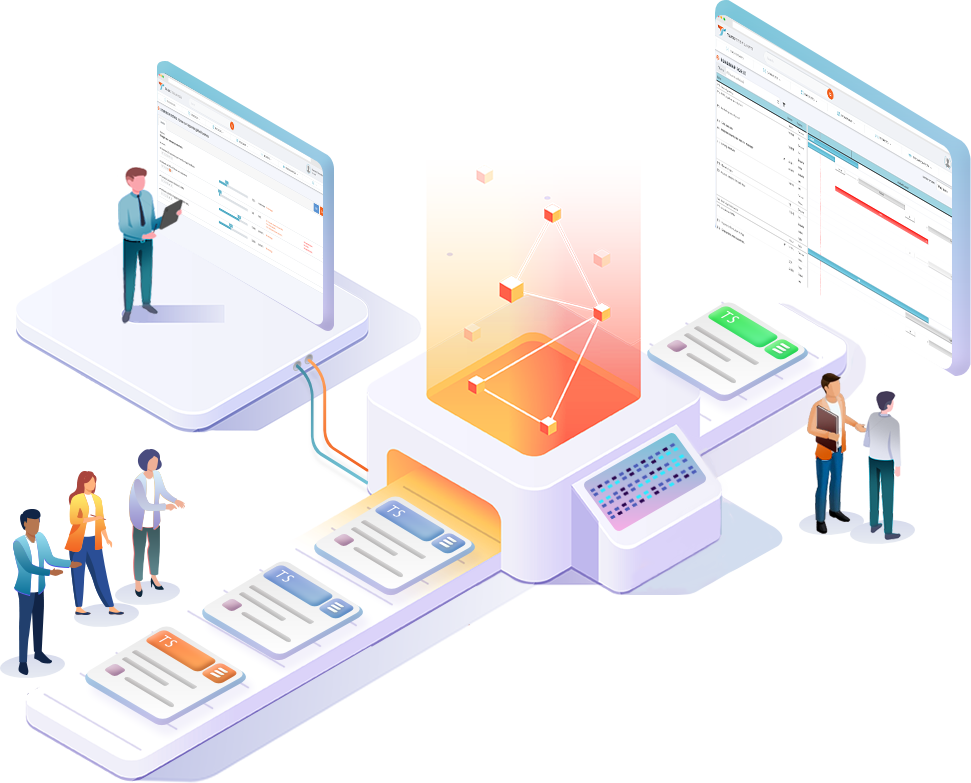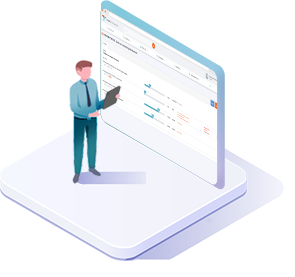The why of Taskstreamer
Aligning teams, throughout any organization, is about communication.

When we started in Project Management for software development over 20 years ago, we learned the hard way that estimating projects is a daunting task.
Certified in Prince2, we created our Project Initiation Documents and tried to work out a planning for the entire project. Project after project we went through the same struggle and tried to make every one look more similar as the one before so our learnings from previous projects could help in predicting the upcoming.
At the same time the Agile manifesto became more and more known in the software industry and we adopted Agile and Scrum thinking. No more project planning but work in sprints and keep track of upcoming work for about 2 upcoming sprints. Hmmm, this didn’t feel quite as satisfying as you’d expect. Stakeholders like management (somebody still has to pay the bills) and dependent departments we asking us “when will x be ready” all the time. Since they had not adopted an Agile way of working, budgeting expected to predict an entire year.
Fast forward to more recent times, we still encounter these mismatches with Stakeholders. We still are those strange people working with sticky notes. More and more management teams understand and accept the Agile movement, but the need for planning remains for various valid reasons. Using roadmaps as living documents gives a sense of direction and more importantly, can align teams and departments.
This is the exact reason we started with TaskStreamer: aligning teams, throughout any organization, is about communication. And about being on the same page and having a common understanding about what needs to be done, when and why. Once aligned you can start optimizing: what if you change x or y. How does that affect your chosen bottom line?

Alignment software should specifically support this idea.
This means:
Most roadmap software allows you to manipulate start- and end dates through drag and drop functions so someone can make it fit.
Project or Product Managers tend to assign specific delivery dates by doing this and communicate these as deadlines, not accounting for changes in the future, adapting to new information but trying to meet the arbitrary deadlines set in the past often based on estimates.
We believe a roadmap is a view on data and it should be updated when new information comes in. This can be a new idea or initiative or a change in strategy. Our vision is to adapt to new information when appropriate to maximize value.
Priority is based on value and estimates of work size. We call this the Value Bucket Model. TaskStreamer lets you define this specifically for your organization.
Estimates are indicative of how long something will take. To create our roadmaps we don’t expect features to be estimated in hours or days. The question that should be asked is: does this fit in x number of sprints of a team (or teams) and, do you need the entire team to work on it or just a part of it. If a team is unable to determine this, the item won’t show up on any roadmap!
So two key factors of our application are the Value Bucket Model and our Roadmap algorithm. TaskStreamer allows you to run Sprints (or short lived iterations), manage Story Backlog Items and work with a Scrum or Kanban Board to track progress. We offer this since we believe we can make the predictions in the Roadmap more accurate by tracking this.
TaskStreamer uses (if you allow it) tracked data about progress to learn how good team predictions really are and to suggest more feasible settings for the future. To get alignment to the best level possible.



Use for freeYou can use Taskstreamer for free for up to 10 users. No credit card required.TRY NOW
|